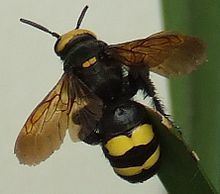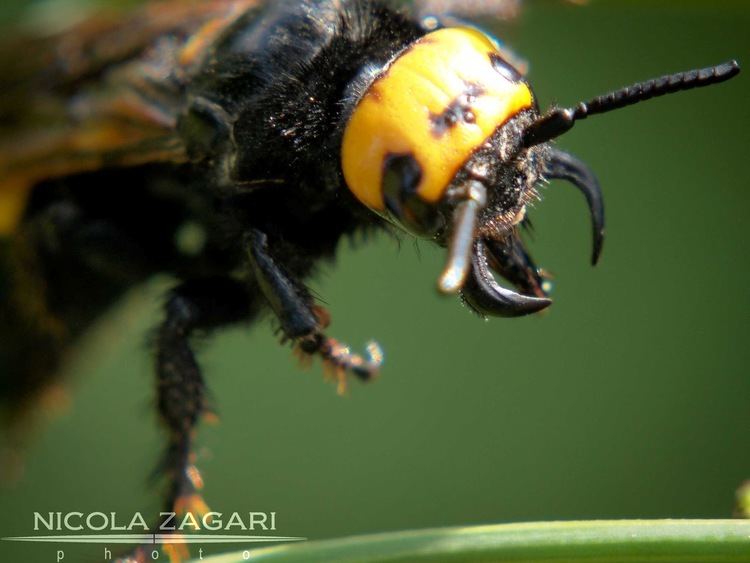Kingdom Animalia Genus Megascolia Higher classification Megascolia maculata Order Hymenopterans | Family Scoliidae Phylum Arthropoda Rank Subspecies | |
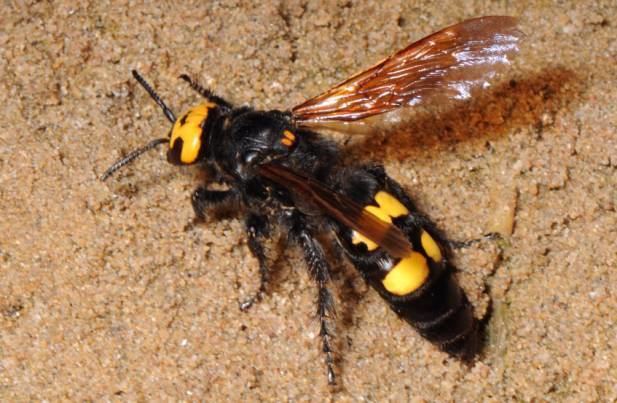 | ||
Scientific name Megascolia maculata flavifrons Similar Megascolia maculata, Megascolia, Insect, Scoliidae, Hymenopterans | ||
The mammoth wasp, Megascolia maculata flavifrons, is a very large wasp (the largest in Europe), with the female reaching up to 6 centimetres (2.4 in), whereas the male is smaller. The species can be seen in warm weather, from May to September.
Contents
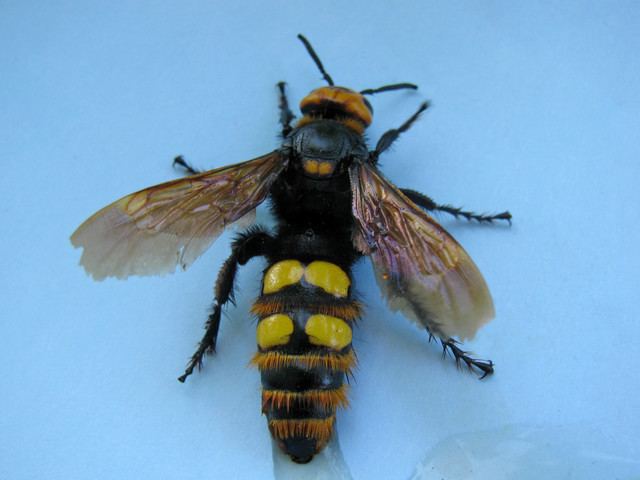
Mammoth wasp largest wasp in europe
Diet
This species feeds on flower nectar. Mainly oak trees.
Sexual dimorphism
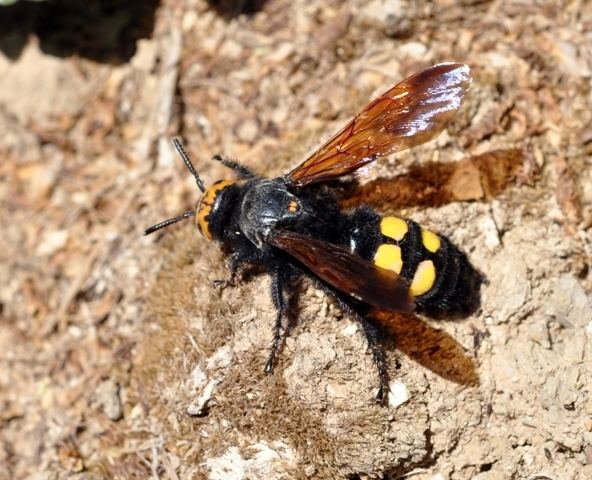
The female is larger than the male. The female's head is yellow or orange, whereas the male's head is black or dark coloured.
Parasitic behaviour

Mammoth wasps are parasitic of the European rhinoceros beetle larva, since the female mammoth wasp stings the larva to paralyze it, and then lays one egg in its outer skin. The egg will then hatch and the mammoth wasp larva will feed on its host, until it is able to build a cocoon and develop into an adult mammoth wasp. It will stay in the cocoon over winter, and will emerge only in spring.
